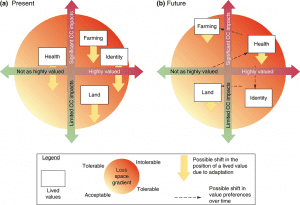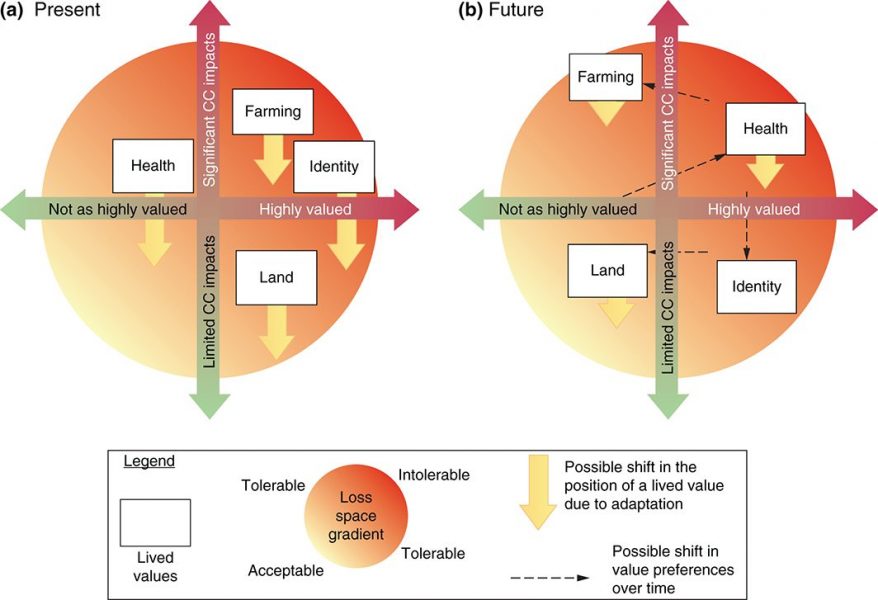As climate change impacts become increasingly widespread and severe, adaptation may no longer be possible. Beyond the ‘adaptation frontier’, it appears likely that loss associated with these impacts will increasingly permeate peoples’ lives. Understanding what constitutes loss, and how it should be assessed, are questions now preoccupying policy makers and researchers around the world.
The Warsaw International Mechanism (WIM), implemented in 2013 under the auspices of the United Nations Framework Convention on Climate Change (UNFCCC), has been tasked with investigating approaches for assessing present and future loss and damage arsing due to climate change. Loss and damage are considered to occur when peoples’ efforts to protect the things they value fail, or when climate risks overwhelm their capacity to do so. In this context, ‘damage’ implies a capacity to recover and the potential for repair, whereas loss is irreversible and permanent. The WIM recognises that significant knowledge gaps exist in our understanding of loss, particularly in relation to so-called ‘non-market’ or ‘non-economic’ losses. These are losses that affect, amongst other things, cultural and social objects of value, such as cultural knowledge, sense of place, social cohesion, and identity. The assessment of such losses remains notoriously difficult. Indeed, standard environmental valuation techniques are often criticised for the limited way they engage with the harms and losses that matter the most to people in the context of their daily lives. Consequently, the intangible dimensions of climate-driven losses tend to be underrepresented or overlooked in science-driven, top-down assessments, as well as in high-level climate negotiations.
A recently published review article in WIREs Climate Change addresses this situation by revealing insights from values-based and place-based approaches to adaptation and their application to climate-related loss. Drawing upon a multidisciplinary literature spanning human geography, psychology, philosophy, economics, and ecology, the review highlights the place-specific and embodied nature of loss, as well as its contingency upon personal and shared perceptions of risk and value. In turn, losses are understood as social constructs in relation to what people value, what they perceive to be at risk, and what they deem worth preserving. Unlike prior assessments that have focused largely on static typologies of loss, the review also draws attention to the fluidity and connectedness of peoples’ lived values. It puts forward a heuristic showing how people might make trade-offs between the many things they value when confronted with acute, gradual, and cumulative climate hazards.
This review contributes significantly to the emerging socially engaged science of loss. It illustrates that, beyond predefined risk assessments, an explicit focus on value- and place-based priorities and decision making processes is needed to put vulnerable communities at the center of analysis, alongside researchers and policy makers, to identify where, how, and when to target concrete efforts for risk reduction and prevent intolerable losses. More importantly, the review shows that loss is inherently connected to what people value and deem meaningful in their lives. Consequently, loss must be understood through situated analysis with people at risk. Further research is needed to understand geographical and cultural patterns of climate-driven loss, as well as how people set their preferences for what they are determined to protect and what they are willing to let go.

The loss space with trade-offs of lived values (what people value in their daily lives) along the horizontal axis and adaptation efforts to reduce looming loss from climate change and other stressors. (a) Perceived or experienced loss under current/observed climate change; (b) potential loss under future climate change with shifts in lived values trade-offs due to new circumstances.
Contributed by Petra Tschakert.

















